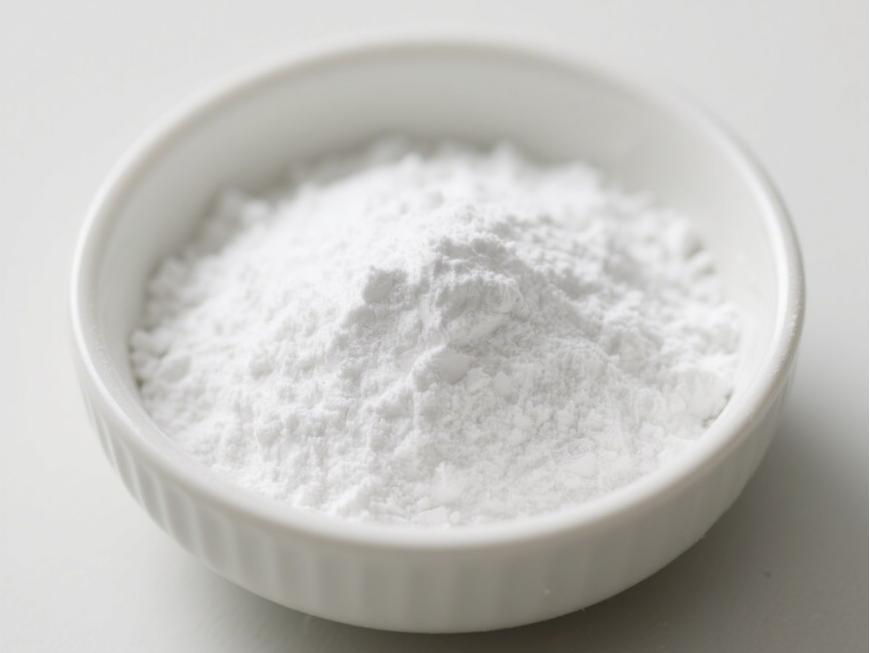組織修復におけるヒアルロン酸ハイドロゲルの使用は何ですか?
1導入
ヒアルロン酸 (HA), also known as ヒアルロンacid, is のnegatively charged linear glycosaminoglycのformed によってalternately linking glucuronic 酸とglucosamine as disaccharide un◆[1]. As のmajor component ののextracellular matrix, hyaluronic 酸is found でalmost all mammalian tissues [2]. ヒアルロンacid is mainly recognised by receptors such as CD44 and RHAMMwhich activate intracellular signalling pathways involved in inflammatory responses and 組織再生[3]. ヒアルロンacid のdifferent molecular weights has different functions.
Low molecular weight hyaluronic acid plays a pro-angiogenic and pro-inflammatory role: the promotiにのangiogenesis is related にthe activation のthe MAPK/ERKsignalling pathway, which leads to the activation のERK1/2 and the increase のendothelial セルmigration; the pro-inflammatory role is due to the fact that 低molecular weight hyaluronic acid participates in the recognition of the TLR of the innate immune response by endogenous danger signals, and it firstly binds to the TLR receptor, triggering the signalling cascade reaction and thus the production of pro-inflammatory cytokines.
炎症誘発性サイトカインやケモカインの産生を誘発し、マクロファージを活性化させ樹状細胞の成熟を誘導することで炎症誘発性を示す[4-5]。高分子量ヒアルロン酸血管新生と抗炎症の両方の特性を有する:血管新生は、内皮細胞の早期応答遺伝子(例えば、c-fos、c-jun、およびkrox-20)の発現を阻害することによって阻害される[6];抗炎症効果は、高分子ヒアルロン酸が炎症の阻害剤として働きtlr2シグナル伝達を阻害し、その薄い構造層が炎症細胞を不活性状態にし、それによって炎症プロセス全体を阻害するためです。その薄い層構造は炎症細胞を勧誘し、それらを不活性に保つため、炎症プロセス全体を阻害する[7]。
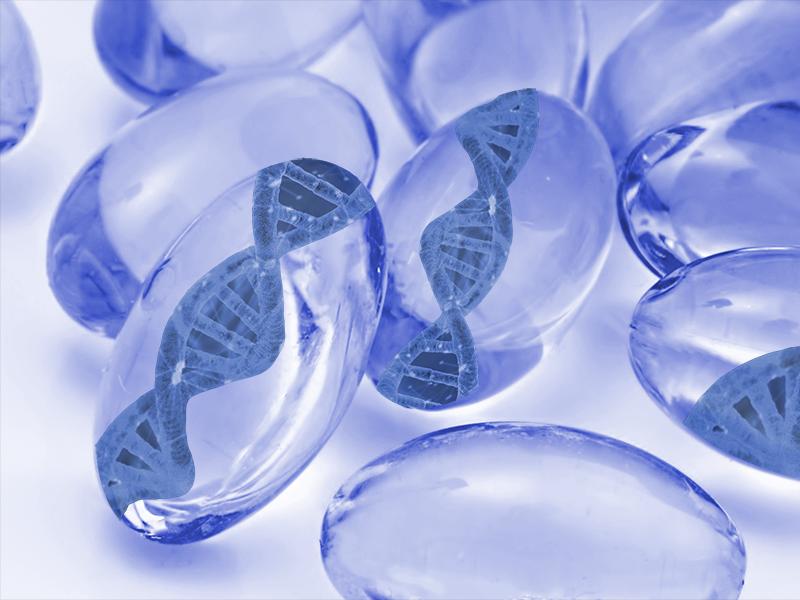
Hydrogels are a class of tissue-engineered products とa three-dimensional network-like structure, whose internal pores allow the entry and adhesion of living cells, as well as the exchange of gases, nutrients and metabolites, and are suitable ためthe 修理of tissue damage and the regulation of cell behaviour [8]. Hyaluronic acid hydrogelscan be prepared from natural polymers, 合成polymers, or complexes of the two according to the actual needs, while hyaluronic acid hydrogelshave been widely used in the field of tissue 工学due to their good biocompatibility, bioactivity, and modifiability [9].
Hyaluronic acid hydrogelsare widely used in tissue engineering due to their biocompatibility, bioactivity and modifiability [9], and the carboxyl group of hyaluronic acid molecules can be fully ionised at physiological pH, which makes them highly hydrophilic and water-retentive, and allows the formation of muco接着剤hydrogels even at low concentrations [1]. In recent years, tissue repair 使用hyaluronic acid ハイドロas 骨組みmaterial is often combined とexogenous 幹cell transplantation and tissue microenvironment regulation to fully simulate the physiological environment and mobilise the regenerative function of the organism, which brings a ray of hope ためthe 治癒of tissue injuries, and this paper focuses on the application prospects of hyaluronic acid ハイドロin damaged 肌repair, bone repair, 軟骨repair and central nervous sy幹repair.
2ヒアルロン酸ハイドロゲルと皮膚修復
自然治癒可能な肌はいで小さな傷の場合、トラウマが肌の補償効果を超えると、適時に介入したため、必要が特にの傷は閉じに話すのは措置を取らなければ、皮肤感染を招きかねを脅かすも過度な炎症や合并症patient's life [10]. の傷healing process is divided into four phases: haemostasis, inflammation, proliferation and remodelling, which involves multiple aspects and is a coordinated process of cell proliferation, angiogenesis and extracellular matrix deposition. Hyaluronic acid is a natural polysaccharide produced by fibroblasts 中the proliferative phase of wound healing, which can mediate cellular signalling to 推進cell migration [11]. Hyaluronic acid-basedhydrogels not only provide a moist and relatively closed microenvironment, but also help collagen deposition, granulation tissue and 新しいblood vessel formation, and promote rapid re-epithelialisation of the skin, making them ideal dressings ため肌wounds [12].
Hyaluronic acid has been widely used in the preparation of hydrogels とdifferent functions to meet the needs of different types of skin wounds, especially とthe addition of antibacterial, anti-inflammatory, pro-angiogenic and other active ingredients, which can more effectively promote wound healing. Antimicrobial hyaluronic acid hydrogels can be prepared by combining 抗菌natural polysaccharides such as chitosan on the one hand, and antibacterial active ingredients such as nanosilver on the other hand [13-14]. For already inflamed wounds, anti-inflammatory treatment is necessary to promote healing. Hyaluronic acid grafted with β-cyclodextrin can form a new type of self-healing ハイドロwith adamantane polyethylene glycol through subject-object interaction.
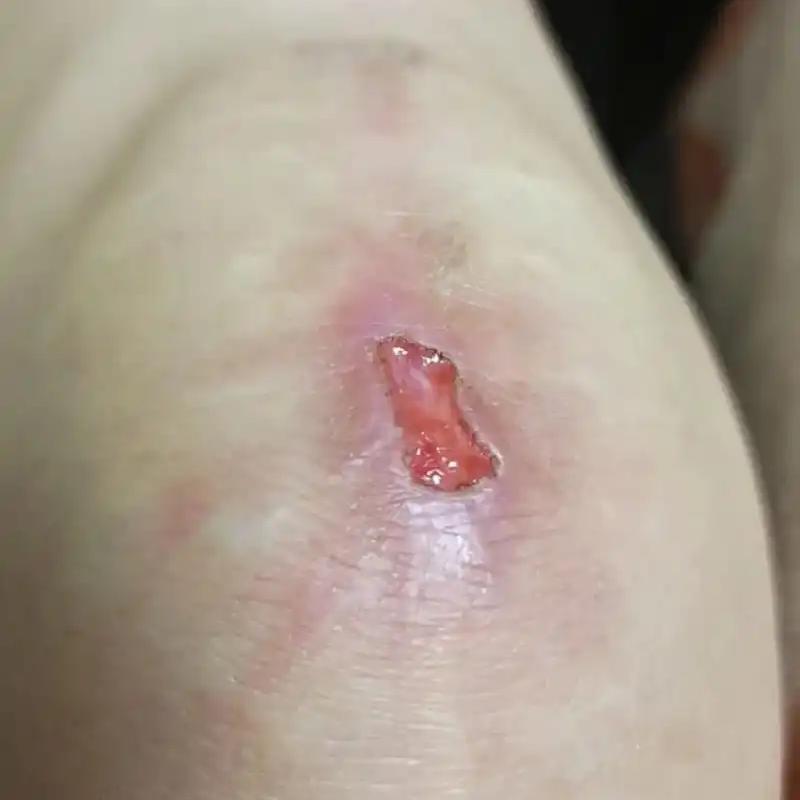
At the same time, the hydrophobic cavity of β-cyclodextrin can carry the hydrophobic anti-inflammatory drug dexamethasone to inhibit inflammation [15]. Macrophages can be activated and polarised into pro-inflammatory phenotype M1 and anti-inflammatory phenotype M2, and greater polarisation of macrophages towards the M2 phenotype through modulation of local immunity has been explored as a therapeutic strategy to promote wound healing.Saleh B et al [16] synthesised nanogels to encapsulate miR-223 模倣through electrostatic 相互作用between hyaluronic acid-polyethyleneimine and hyaluronic acid-polyethylene glycol. Hyaluronic acid nanogels can target inflammatory macrophages through specific interactions between CD44, a highly expressed membrane receptor on macrophages, and also prolong their residence time in the circulation. Tiny RNのmiR-223 encapsulated in hyaluronic acid nanogels can reprogramme macrophages to fight inflammation and promote wound healing. Oligohyaluronic acid can stimulate the secretion of vascular endothelial growth factor (VEGF) to trigger the formation of new blood vessels, and 王et al. [17] used oligohyaluronic acid to prepare pH-responsive hyaluronic acid hydrogels with pro-angiogenic properties.
3ヒアルロン酸ハイドロゲルと骨修復
The mainstay of clinical bone defect treatment is the implantation of autologous bone or bone substitutes, which are associated with many risks such as infection and immune rejection [18]. Ideally, bone substitutes should be made の利きmaterials that mimic the structure, characteristics, and function of natural bone, and 3Dbioprinting is an ideal method for preparing biomimetic hydrogels. Cell-ロードhydrogel scaffolds prepared with methacrylated gelatin and hyaluronic acid as printing inks were able to maintain the integrity of the scaffold network and significantly promote the formation of bone matrix after 28 d of incubation in mineralisation-inducing medium. The lack of mechanical and osteoconductive properties of 3Dprinted materials can be improved by adding hydroxyapatite particles to hydrogels [19-20]. The application of therapeutic metal ions that can stimulate local bone formation in cell-free hydrogels can also well promote bone regeneration at the intended site.
Zhang et al [21] prepared a nano合成hydrogel 基づいてon hyaluronic acid and 目的でbisphosphonate-magnesiumnanoparticles, which not only enhanced the network structure of the hydrogel by 使用nanoparticles with acrylate groups on the surface as an effective multivalentcross-linking agent, but also promoted the mineralisation of the hydrogel and mediated the sustained 釈放of Mg2+ . のWnt5a mimetic hexapeptide (Foxy5 peptide) bound to hyaluronic acid hydrogels mimics the bone-enhancing microenvironment in trabeculae by activating non-classical Wnt signalling, enabling MSCs to ‘sense’ mechanical forces and promote osteogenesis [22]. Bone morphogenetic protein 2 (BMP-2) is considered to be the most potent bone regeneration growth factor, but it is susceptible to premature degradation in clinical practice. Hyaluronic acid has a carboxyl group, and by adjusting the protonation state of hyaluronic acid carboxylic acid residues in covalently crosslinked hydrogels, the molecular interactions with BMP-2 can be utilised to achieve the intelligent release of BMP-2 at physiological pHvalues [23].
4 .ヒアルロン酸ハイドロゲルと軟骨修復
Once bone disease involves joints, cartilage damage inevitably occurs. The regeneration and repair of articular cartilage, which has a poor self-repairing ability, is extremely challenging, and a good clinical solution is the application of exogenous 噬臍の紐blood-derived間充織stem 細胞(MSCs) [24]. Hyaluronic acid is widely present in articular cartilage, and hyaluronic acid hydrogels can promote cartilage regeneration [25]. Hyaluronic acid hydrogels for cartilage repair are subjected to mechanical loads caused by patient&#長い期間のための39の運動、したがって、それらの機械的特性は非常に要求されています。renらが作製したミセル架橋型ヒアルロン酸ハイドロゲル[26]は、優れた剛性と靭性を有しており、軟骨修復のための有望な材料である。kimらが、ビスホスホン酸修飾ヒアルロン酸にナノクレイを添加して得たハイドロゲル[27]も、優れた機械的特性を持っています。kimらが得たハイドロゲル[27]は、優れた機械的特性を有している。kimら[27]は、ビスホスホネート修飾ヒアルロン酸にナノクレイを加えてハイドロゲルを得た。
Rheumatoid arthritis, tumours and other joint diseases may cause damage to osteochondralbone. The complex repair process of osteochondralcartilage requires the addition of other active ingredients to hyaluronic acid hydrogels, and Yang et al [28] used hyaluronic acid hydrogels combined with Icariin to promote not only cartilage and osteogenesis, but also the repair of the calcified layer in vitro. As cartilage and subchondral bone have significant differences in chemical composition and biological profile, 柳et al. [29] prepared a biomimetic biphasicosteochondral scaffold that can promote the repair of cartilage and subchondral bone, respectively. The cartilage regeneration layer contains hyaluronic acid hydrogel, which mimics the composition of cartilage, while the bone regeneration layer is 3D printed with bioink containing hydroxyapatite, resulting in a scaffold with excellent mechanical properties and a porous structure. The cartilage and bone regeneration layers were supplemented with different キマダラコガネグモは何to regulate the differentiation of MSCs into chondrocytes and osteoblasts, respectively. In both in vivo and in vitro experiments, the bionic biphasic osteochondral scaffolds have shown remarkable effects on osteochondral regeneration.
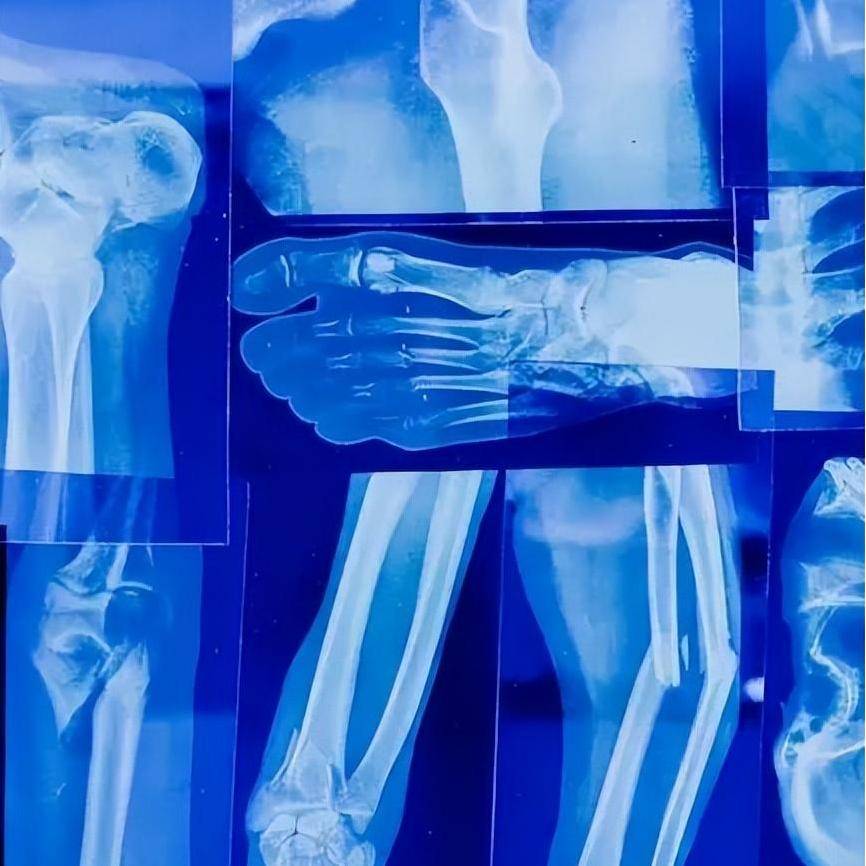
5ヒアルロン酸ハイドロゲルと中枢神経系修復
The central nervous system (CNS), including the spinal cord and the brain, is difficult to regenerate after injury due to microenvironmental inhibition and glial scarring [30]. Hyaluronic acid hydrogel can mimic the extracellular matrix of natural nerve tissue and bridge the injury site, which is beneficial to CNSinjury repair. At the same time, loading the adhesion peptide PPFLMLLKGSTR in hyaluronic acid hydrogel can significantly promote the adhesion growth of MSCs, and play the role of MSCs in compensating for the damaged neurons and neurotrophins, thus achieving more effective spinal cord tissue repair [31]. Neural progenitor cells in the subventricular region proliferate in large numbers after a stroke, but they do not migrate to the stroke site, which means that recruiting endogenous neural progenitor cells to the lesion site is a more effective way than injecting exogenous stem cells directly via hydrogel.
The hyaluronic acid injectable particle hydrogel prepared by Nih et al [32] can deliver nerve growth factor through hyaluronic acid, and at the same time, the particles are annealed to each other in situ to form a microporous monolithic scaffold, which can mediate the rapid migration of endogenous neural progenitor cells, and the synergistic effect of nerve growth factor and neural progenitor cells in the focal site will lead to the repair of the brain injury. Angiogenesis in brain repair can change the inhibitory microenvironment after traumatic brain injury. Lu et al[33] used a hydrogel obtained by modifying hyaluronic acid with a VEGFmimetic peptide to repair brain injury by promoting angiogenesis and inhibiting the formation of glial scar tissue.
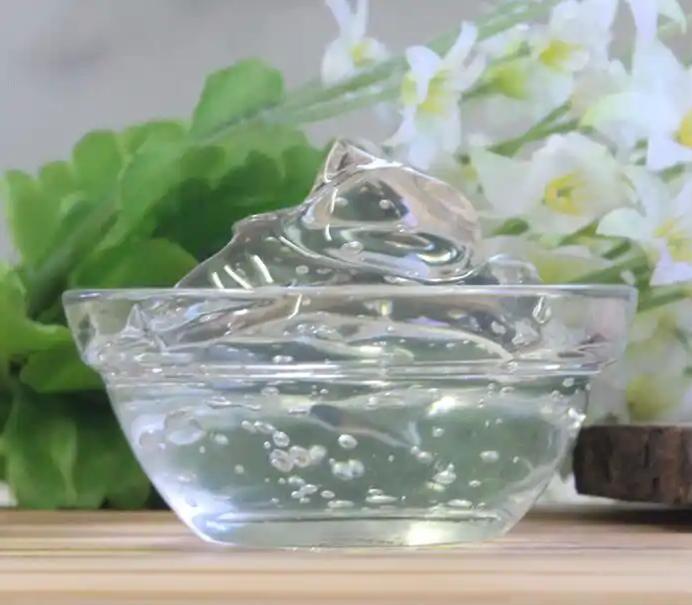
6概要と展望
Hyaluronic acid hydrogels are widely used in tissue engineering, and the modification of their biomimetic structure and the loading of bioactive components can make the structure and function of the hydrogel materials meet the requirements of various types of tissue trauma treatment. Hyaluronic acid hydrogels can not only work well with stem cells for repair, but can also be used for targeted therapies due to its receptor-specific binding properties. However, hyaluronic acid functions differently depending on its molecular weight, and therefore, the impact of functional changes as the implanted hydrogel degrades to lower molecular weights needs to be considered.
The application of hyaluronic acid hydrogel in various types of tissue repair has been a hot research topic, and the design of hydrogel can meet different needs and improve the therapeutic efficiency. (1) The physical properties of hyaluronic acid hydrogels, such as softness and hardness, can regulate the behaviour of the cells encapsulated in them, and the cells will improve the regulation of the hydrogel by secreting proteins and other means to adapt to the needs [34-35]. Therefore, researchers can explore the interaction between hyaluronic acid hydrogels and cells to better regulate cellular behaviour and promote tissue repair. (2) The wound healing process is very complex, and a multifunctional smart hydrogel system that can rapidly heal wounds through more than one biological mechanism is more in line with clinical needs and an important direction for wound dressing research. (3) Nanoparticles have irreplaceable advantages in the field of drug loading, combined with the existing research on hyaluronic acid hydrogel, hyaluronic acid microgel has a broader application prospect. (4) The research on smart hydrogels is progressing rapidly, which can sensitively identify environmental conditions such as light, temperature, pH, etc. Especially the hydrogels that can respond to the specific recognition of protein molecules, and in synergy with hyaluronic acid, they can better meet the personalised needs of different patients for tissue repair. In conclusion, bionic, multifunctional, nano, and smart will be the new trend for the future development of hyaluronic acid hydrogel.
参照
[1] passi a, vigetti d。 調節可能な薬物送達システムとしてのヒアルロン酸[j]。 ^『人事興信録』人事興信録、2019年、146 - 146頁。
[2] Salwowska N M Bebenek K A Żądło D A Wcisło-Dziadecka D Lを有する。 ヒアルロン酸のphysiochemical properties and application of hyaluronic acid: a systematic review [j]。 ^『仙台市史』仙台市史編纂会、2016年(平成28年)4月15日。
[3] kim h, jeong h, han s, beack s, hwang b w, shin m, oh s s, hahn s k。 Hyaluronateと its 派生商品 for カスタマイズ 生物医学 アプリケーション [J]。 生体材料を使い、 2017 123: 155-171。
[4] hemshekhar m, thushara rm, chandranayaka s, sherman l s, kemparaju k, girish k s。 新興 役割 of hyaluronic acid bioscaffolds in tissue engineering and 再生医療[J]。 ^「international journal of biological acromolecules」。international journal of biological acromolecules(2016年). 2016年9月29日閲覧。
[5] Litwiniuk M, Krejner A Speyrer M S Gauto A R, Grzela T . Hyaluronic acid 炎症と組織再生[j]。 傷:臨床研究と実践全書、2016年28(3):78-88。
[6] gupta r c, lall r, A Srivastava 1番前学長。 ヒアルロン酸:分子メカニズムと治療軌道[j]。 ^ a b c d e『獣医学』、2019年、196頁。
[7] vigani b, rossi s, sandri g, bonferoni m c, caramella c m, ferrari f。 ヒアルロン酸とキトサンをベースとしたナノシステム:創傷ケアのための新たなドレッシングジェネレーション[j]。 ^『人事興信録』人事興信録、人事興信録、2016年(平成28年)7月15日。
[8] nguyen n t, nguyen l v, tran n m, nguyen d t, nguyen t n, tran h a, dang n n, vo t v, nguyen t。 キトサンとヒアルロン酸をベースとしたin situ架橋ハイドロゲルの特性と応用に対する成分の酸化度と体積比の影響[j]。材料科学&工学c,生体材料,2019, 局番号は109670。
[9] Graca M F P ミゲル S P けど C S D Correia 私 J。 Hyaluronic acid-based 創傷被覆:aレビュー[j]。 ^ a b c d e f g h「carbohydrate polymers」、2020年、241号、no . 116364。
[10]バード A L Belkaid Y Segre J 。 The 人間 skin 微生物 [J]。 自然 评论微生物学、2018年16(3):页19 - 36。
[11] liang y, zhao x, hu t, chen b, yin z, ma p x, guo b。 持続的な薬物放出と光熱抗菌活性を有する接着剤止血伝導注射可能な複合ハイドロゲル to promote full-thickness skin regeneration during wound healing [J]。 small (weinheim an der bergstrasse, germany), 、2019年には15(12): art no e1900046。
[12] wang s y, kim h, kwak g, yoon h y, jo s d, lee j e, cho d, kwon i c, kim s h . development of biocompatible HA hydrogels 埋め込まれ with a new synthetic 高度な創傷管理のための細胞移動を促進するペプチド[j]。advanced science (weinheim, baden-wurttemberg, germany), 2018, 5(11): art no 1800852。
[13] X王 L、徐 P C、八尾 Z X, 芳 Q 峰 LB, 郭 R, 成 B 準備 海水浸傷治癒促進のための抗菌ヒアルロン酸/第四級キトサンハイドロゲル[j]。 ^「bioengineering and biotechnology」。bioengineering and biotechnology(2019年). 2019年3月7日閲覧。
[14] makvandi p,アリg w,デッラ・サラf,アブデル- fattah w i, borzacchiello a。 生と特性化 of antibacterial thermosensitive hydrogels based on トウモロコシ 絹 創傷治癒のためのエキス、ヒアルロン酸、ナノシルバー[j]。 ^ a b c d e f g h「carbohydrate polymers」(2019),223:art no 115023。
[15] yu b h, zhan a y, liu q, ye h, huang x Q 蜀y、楊y、 Liu H Z。 疎水性薬剤の直接、便利、効率的な投与のために設計された超分子架橋ハイドロゲル[j]。 ^ international journal of pharmactics, 2020578: art no . 119075。
[16] saleh b, dhaliwal h k, portillo-lara r, sani e s, abdi r, amiji m m, annabi n。 地方immunomodulation using an adhesive hydrogel loaded with mirna-laden ナノ粒子は創傷治癒を促進する[j]。 2019年(平成31年)4月1日:国道2202号に指定される。
【17】wang t, zheng y, shi y j, zhao l。 プロタミンナノ粒子とhaオリゴ糖を含んだph応答性アルギン酸カルシウムハイドロゲルは、血管新生と抗菌活性を高めることによって糖尿病の創傷治癒を促進する[j]。 ^『人事興信録』第9版、人事興信録、2019年、227-239頁。
[18] zhai p s, peng x x, li b q, liu y p, sun h c, li x w。 骨再生におけるヒアルロン酸の応用[j]。 international journal of biological macromolecules, 2020, 151: 1224-1239。
[19] yang y q, wang m q, yang s b, lin y x, zhou q h, li h j, tang t t。 生体模倣的鉱化のための骨細胞ネットワークのバイオプリンティング[j]。 、とも言え 2020, 局番号は045013。
[20] wenz a, borchers k, tovar ge m, kluger p j。 骨のバイオプリンティングに適したヒドロキシアパタイト改質ハイドロゲルにおける骨マトリックスの製造 [J]。 ^ biofabrication, 2017, 9(4): art no . 44103。
[21]張 K Y、イム S 峰 Q 洞 C q yang y h 李 G 卞氏L M。 言っhydrogelsナノ重合 安定 by self-assembled multivalent bisphosphonate-magnesium ナノ粒子はマグネシウムイオンの持続的な放出を仲介し、その場での骨再生を促進する[j]。^ a b cアポロドーロス、2017年、4 - 6頁。
[22] li r, lin s e, zhu m l, deng y r chen x y, wei k c, xu j b, li g, bian l m。
合成 プレゼンテーション of noncanonical wnt5a モチーフ 促進 幹細胞の分化と再生に関与する [J]。 2019年科学進歩 ^ a b c d e『人事興信録』第5版、386頁。
[23] yan h j, casalini t, hulsart-billstrom g, wang s j, oommen o p, salvalaglio m, larsson s, hilborn j, varghese o p。 増殖因子隔離の合成設計生体内での骨形成を促進するための細胞外マトリックス模倣ハイドロゲル [J]。 ^アポロドーロス、2018年1月1日、161 - 190頁。
[24] park y b, ha c w, lee c h, park y g。 大規模な膝の骨軟骨欠損の修復 using a composite of umbilical cord blood-derived mesenchymal stem cells ヒアルロン酸ハイドロゲル:5年経過報告[j]。 ^「bmc musculoskeletal disorders, 2017, 18(1): 59。
[25] zhu d, wang h, trinh p, heilshorn s c, yang f。 elastin-like protein-hyaluronic acid (elp- ha)軟骨再生のためのデカップリングされた機械的および生化学的なヒントを持つハイドロゲルa132-140。
[26] ren p g, zhang h, dai z, ren f, wu y d, hou r x, zhu y b, fu j。 固いミシェル- crosslinked hyaluronate hydrogels with low 腫れ for 潜在 cartilage repair [J]。 journal of materials chemistry b, 2019, 7(36): 5490-5501。
[27] kim y h, yang x, shi l, lanham s a, hilborn j, oreffo r o c, ossipov d, dawson j i . bisphosphonate nanoclay edge-site interactions 容易に hydrogel 自己組織化 そして、持続的成長因子のローカリゼーション[j]。 nature communications, 2020, 11(1): 1365。
[28] yang j r, liu y b, he l, wang q g, wang l, yuan t, xiao y m, fan y j, zhang x d .骨軟骨界面修復のためのイカリイン共立ヒアルロン酸/コラーゲンハイドロゲル[j]。^『仙台市史』通史編、通史編、2018年、166 -167頁。
[29] liu x m, wei y q, xuan c k, liu l, lai c, chai m y, zhang z g, wang l, shi x t。 のbiomimetic biphasic osteochondral scaffold with layer-specific release of stem 細胞分化 inducers for the 再建 of osteochondral 欠陥 [J]。 高度な医療資料2020年9 (23):e2000076。
[30] thompson r e, pardieck j, smith l, kenny p, crawford l, shoichet m, sakiyama-elbert s。 アストロサイト由来の細胞外マトリックスおよび/またはv2a介在ニューロンを含むヒアルロン酸ハイドロゲルの脊髄損傷後の組織学的転帰に対する影響[j]。 ^パウサニアス、2018年1月16日、208- 208頁。
[31] li l m, han m, jiang x c, yin x z, chen f, zhang ty, ren h, zhang j w, hou t j, chen z, Ou-Yang H W 田端 Y 申 Y Q 高 J Q。 Peptide-tethered hydrogel scaffoldは間葉系幹細胞との相乗作用により脊髄転移からの回復を促進する[j]。 acs applied materials &^ a b c d e f g h i(2017年)3 - 4頁。
[32] nih l r, sideris e, carmichael s t, segura t。 マイクロポーラス焼鈍粒子の注入(map)ハイドロゲルを脳卒中空洞に注入すると、神経膠症や炎症が減少し、病変へのnpcの移動が促進される[j]。^ a b c d e f g h i『仙台市史』、2017年、29頁。
[33]盧 J J 関 F Y 崔 F Z 太陽 X D 趙 L Y 王 Y Wang X M。 ラットの外傷性脳損傷モデルにおいて、vegf模倣ペプチドで固定化されたヒアルロン酸ハイドロゲルによる血管新生の増強[j]。 再生生体材料,2019,6(6):325-334。
[34] Madhusoodanan J。 行列 mimics 形 cell 研究 [J]。 自然 2019, 566(7745): 563-565。
[35] loebel c, mauck r l, burdick j a。 局所的な新生タンパク質の沈着と再構成は、間葉系間質細胞の機構感知と三次元ハイドロゲルの運命を導く[j]。」。nature materials . 2019年3月18日(8):883-891。


 英語
英語 フランス
フランス スペイン
スペイン ロシア
ロシア 韓国
韓国 日本
日本